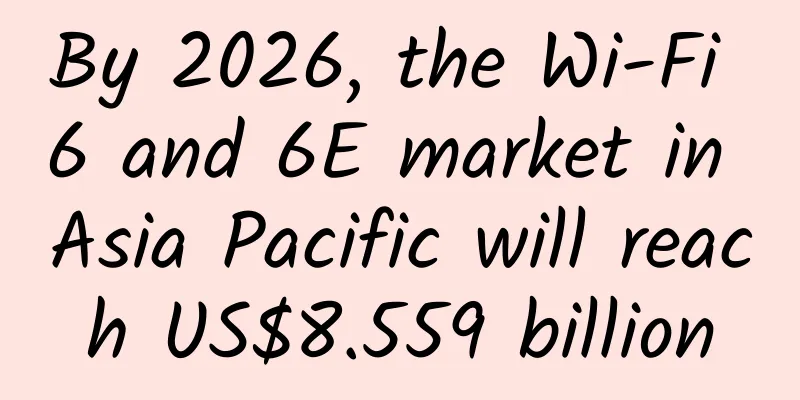By 2026, the Wi-Fi 6 and 6E market in Asia Pacific will reach US$8.559 billion

|
On March 26, according to foreign media reports, market research firm Research And Markets predicts that by 2026, the cumulative shipments of Wi-Fi 6 and Wi-Fi 6E-enabled devices will exceed 13 billion, with a growth rate of approximately 26% between 2020 and 2026.
Data shows that in 2019, video accounted for nearly 61% of the total global downstream traffic, followed by network traffic (13.1%), game traffic (8.0%), social media traffic (6.1%) and file sharing traffic (4.2%). Due to the outbreak of the new crown pneumonia epidemic, the world has implemented lockdowns, leading to a global shift to remote work and online learning, and Internet usage patterns have undergone major changes. The Asia Pacific region is expected to dominate the Wi-Fi 6 and 6E market with a share of nearly 50% by 2026. The Asia Pacific Wi-Fi 6 and 6E market is expected to reach US$8.559 billion by 2026, with a CAGR of 25.6% from 2020 to 2026. Consumer devices such as smartphones, tablets, laptops, and PCs are expected to be the main contributors. China, Japan, and South Korea are expected to be the main contributors to the Asia Pacific Wi-Fi 6 and 6E market. Wi-Fi 6 offers advantages over previous generations in terms of network speed, capacity, and responsiveness. Due to the 1024-QAM modulation scheme and uplink resource scheduling mechanism, Wi-Fi 6's data rate exceeds 1Gbps. Wi-Fi 6 also enhances the user experience in dense environments and addresses emerging high-bandwidth, low-latency use cases. Wi-Fi 6 delivers higher speeds and supports more data-intensive applications, including 4K UHD video streaming, real-time immersive gaming, and mobile augmented reality. |
<<: How 5G accelerates the development of the digital economy
>>: What will 6G look like in the future?
Recommend
HPE Aruba Networking Launches Next-Generation Wi-Fi 7 Access Points to Help Enterprises Address Security, AI and IoT Challenges
HOUSTON - April 23, 2024 - Hewlett Packard Enterp...
Summary and analysis of the top ten optical communication technologies in 2016
5G channel coding technology In October 2016, Hua...
Shifting gears to 5G: Operators will experience both hardship and sweetness in 2019
Recently, the three major operators have released...
Huawei has done four "small things" to achieve intelligent evolution with its ecosystem partners and win-win ecosystem
[51CTO.com original article] This morning, Huawei...
IPv6 brings huge opportunities for managed service providers
For MSPs, helping customers transition to IPv6 co...
As long as you are willing to find us to develop, you don't have to be exhausted.
[51CTO.com original article] The boss said that d...
Be careful not to be cheated. I will teach you how to buy a wireless router.
Before the full resumption of work, production an...
FirstByte: Russian KVM monthly payment starts from 55 rubles (≈ RMB 4.78 yuan)
FirstByte is a regular Russian hosting company fo...
HTTPS learning summary
Preface I've been reading about HTTP recently...
Authoritative interpretation from the Ministry of Industry and Information Technology: What exactly is "5G+Industrial Internet"?
[[415906]] Recently, the Information and Communic...
spinservers: $89/month - Dual E5-2630, 128G memory, 4*2TB hard drives, 10Gbps bandwidth, San Jose & Dallas data centers
spinservers has released this month's promoti...
HostYun new product: CN2 GIA+AS9929 hybrid line native IP monthly payment starts from 19 yuan
HostYun has launched a new product, this time wit...
Home Wi-Fi Routers and Extenders Market to Reach $18 Billion by 2030
[[420910]] Market Introduction Market research fi...
Quickly solve enterprise globalization network challenges and accelerate and protect enterprise cloud applications
[51CTO.com original article] On the afternoon of ...
5G technology is expected to make various contributions to Jordan’s GDP
Recently, Ericsson commissioned management consul...









